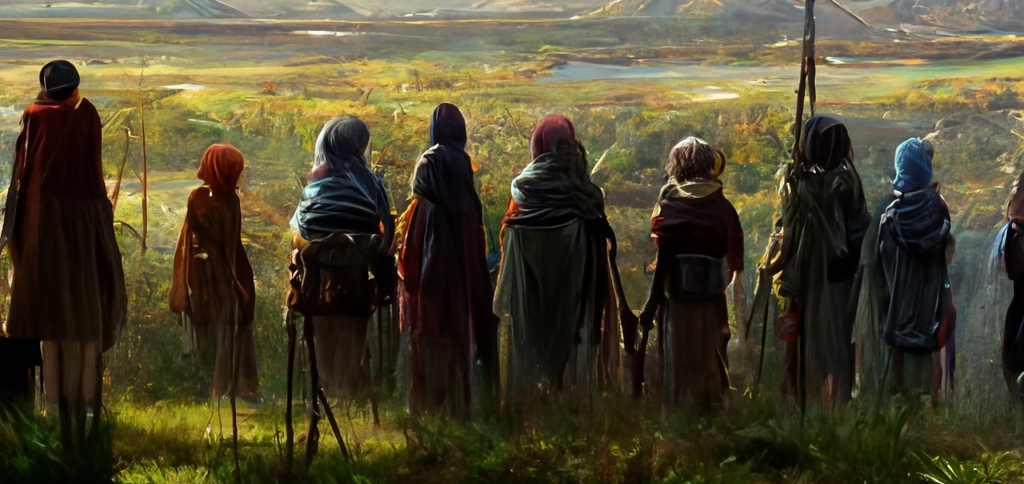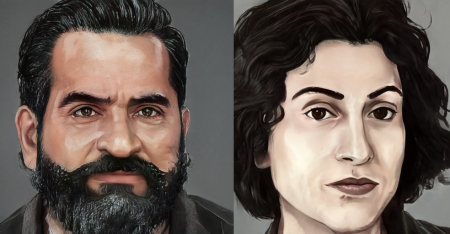Dwarf
Dwarves are a sentient species native to the Galisean and Feloran continents of Getninia. They are widespread, and fairly populous, being scattered in several compact civilizations primarily in Galisea, with one, arguably two Dwarven dominant societies in Felora as well. Dwarven socieites, as a rule, are some of the most advanced in the known world, with a number of extremely advanced technologies originating from Dwarven lands and spreading from there.
Dwarves, particularly those in non-Dwarven society are more likely take up skilled trades than is the norm, with disproportionately large numbers of smiths, carpenters, masons, and other skilled workers counted among the dwarves. Dwarven adventurers are relatively common, with many taking up the axe to bring honor to their families, or to destroy enemies of dwarvenkind that lurk in the dark places of the world.
Basic Information
Anatomy
Dwarves posses an upright body plan with two legs, two arms, and a head, similar to most other sentient species in the known world. Dwarven hands have tactile fingers, but lack tactile toes. Dwarves tend to posses two eyes, two ears, a nose, and a mouth on their face. Dwarves are known, moreso than most other species to have extraordinarily thick body hair; some ethnic groups have thick facial hair regardless of sex, though this is not a universal trait.
Biological Traits
Dwarves can be expected to live for three centuries, though some exceptional examples can live up to four centuries. Those with magical assistance can sometimes live up to three millennia, though this exceptionally rare, with only a handful of extremely powerful wizards and priests, and the nearly extinct Dwarven Druidic orders.
Dwarves are shorter in stature in comparison to humans, elves, and orcs with a stocky, heavy set build. An average dwarf has a height of one and one and a half meters, and an average weight of fifty to ninety kilograms. Dwarves are often slightly taller than halflings and gnomes, but much shorter than other humanoid races. Despite their short stature, dwarves are generally physically stronger than humans thanks to a relatively high density of fast twitch muscles in their frame. Dwarves are also known for physical hardiness, and an inborn resistance to poison.
Dwarves are, as a rule comparatively pale skinned in comparison to other races, this being in large part due to many living underground. However, the range of skin tones for dwarves remains relatively diverse with the Indhric Dwarves in particular being known for being relatively dark skinned. Hair colors are relatively diverse with reds, browns, and blacks all being expressed in large numbers. Dwarves are near universally brown eyed however, with only a small handful of dwarves having other eye colors expressed.
Additional Information
Social Structure
Dwarves tend to favor strong extended familial social structures, but dwarves do also bind multiple families into complex and organized societies. Dwarven societies strongly favor cooperation, and putting aside personal gain for the greater good. Most of the extant dwarven societies favor autocratic rule and strict hierarchies, though more decentralized power structures also exist, with the Volgier dwarves having become noteworthy for such a social organization.
Geographic Origin and Distribution
Dwarves can be found anywhere in Getninia but are predominantly concentrated in Galisea, favoring easily defended, and ore rich mountains to take as homes. Dwarves are most prominent in the Odric Mountains, the Volgier Mountains, the Beiguo, and the Indhric Mountains. There are substantial dwarve minorities in neighboring regions and in Sarendia as well.
Average Intelligence
Dwarves are a sentient species capable of forming complex societies, and inventing advanced technologies. Dwarves are perhaps most famous as some of the most skilled craftsmen and oftentimes skilled musicians. However, a dwarf is stereotypically stubborn and unwilling to adapt to change. Dwarves are intelligent, but are not particularly famous for great intelligence.
Perception and Sensory Capabilities
Dwarves possess five basic senses: eyesight, hearing, taste, tactile, and smell. Moreso than the tallfoot mortals or their above-ground halfling cousins, Dwarves tactile senses are able to sense tremours and structural weaknesses deep below. Like most mortals, they still primarily rely on sight to perceive the world. Dwarves have decent nightvision, grey dwarves especially so, though some have trouble seeing in the light.
Civilization and Culture
Major Organizations
The dwarves dominate four distinct states, all located in Galisea, generally in mountain ranges. These are the Kingdom of Cyrenica, the Volgier League, the Celestial Realm of Beiguo, the Grand Principality of Gorachenya, and the Lordship of Indhara. Each of these societies is relatively well organized, formalized, and prosperous. Though those in the south tend to be better developed than those in the north.
Each of the dwarven states, possess their own unique religion, often practicing monalatry, though this is not always the case. Generally however, there are a fair number of common myths and legends that bind dwarven religious groups together, along other, similar parralels in gnomish and halfing cultures.
Dwarven adventurers guilds, martial orders, and mercenary bands are fairly rare but are highly regarded as some of the finest in the known world. Most famous among these include the Mithral Guard of Cyrenica, the Golden Bands found among the more elite of the Voleberg's citizen militias. Religious military orders exist, but are often quite small and closely knit.
Average Technological Level
Dwarves are generally one of the key technological drivers of, especially Galisean society, due in large part to extensive access to mineral resources. Dwarves have been responsible for the development of gunpowder, clockwork, and yield improvement technologies such as water and wind mills, and agricultural techniques meat for use in hostile terrain such as rock breaking, and underground agriculture.
Major Language Groups and Dialects
The dwarven race speaks a number of languages, with those of dwarven states, Cyrenic, Volgier, Indharan, Gorach, and Beishin. Dwarves that have integrated into other civilizations, often adopt foreign langauges such as Aeillan, Gallacan, Hadar, and Guandesa in addition to their own native tongue. Those who adopt certain professions may learn others.
History
In ancient times, Dwarven societies were closely intertwined and related, with long distance trade, prolonged warfare on the surface over control of vital farmlands. Over time, as other mortals migrated and developed societies, the contact between these peoples became rarer and rarer, or increasingly through non-Dwarven intermediaries.
Lifespan
~300-350 years rarely up to ~400 years
Average Height
1-1.5 m
Average Weight
50-90 kg
Related Organizations
Related Ethnicities
DnD (5e) Traits:
Dwarven Basic Traits
- Medium Size
- Base walking speed of 25 feet (unaffected by armor)
- Proficiency in Common, any one Dwarven language (Cyrenic, Volgier, etc.), and any one other language.
- 60 ft. Darkvision
- Resistance to poison damage, and advantage on saving throws to resist poison
- Proficiency with battleaxe, handaxe, light hammer, and warhammer and your choice of smith's tools, brewer's supplies, or mason's tools
- Expertise in Knowledge (History) checks on matters related to stonework
- +2 to Constitution score, +1 to one other ability score
If using Hill Dwarf
- 1 Additional Hitpoint per level
If using Mountain Dwarf
- Proficiency with Light and Medium armor
- +1 to Strength score
If using Grey Dwarf
- 120 ft. Darkvision
- Advantage on saving throws to resist illusions, charm and paralysis
- 1/day use of Enlarge/Reducespell at 3rd level, and 1/day use of Invisibilityspell at 5th level.
- Disadvantage to atttack rolls and Perception checks made while in or targetting something in direct sunlight



